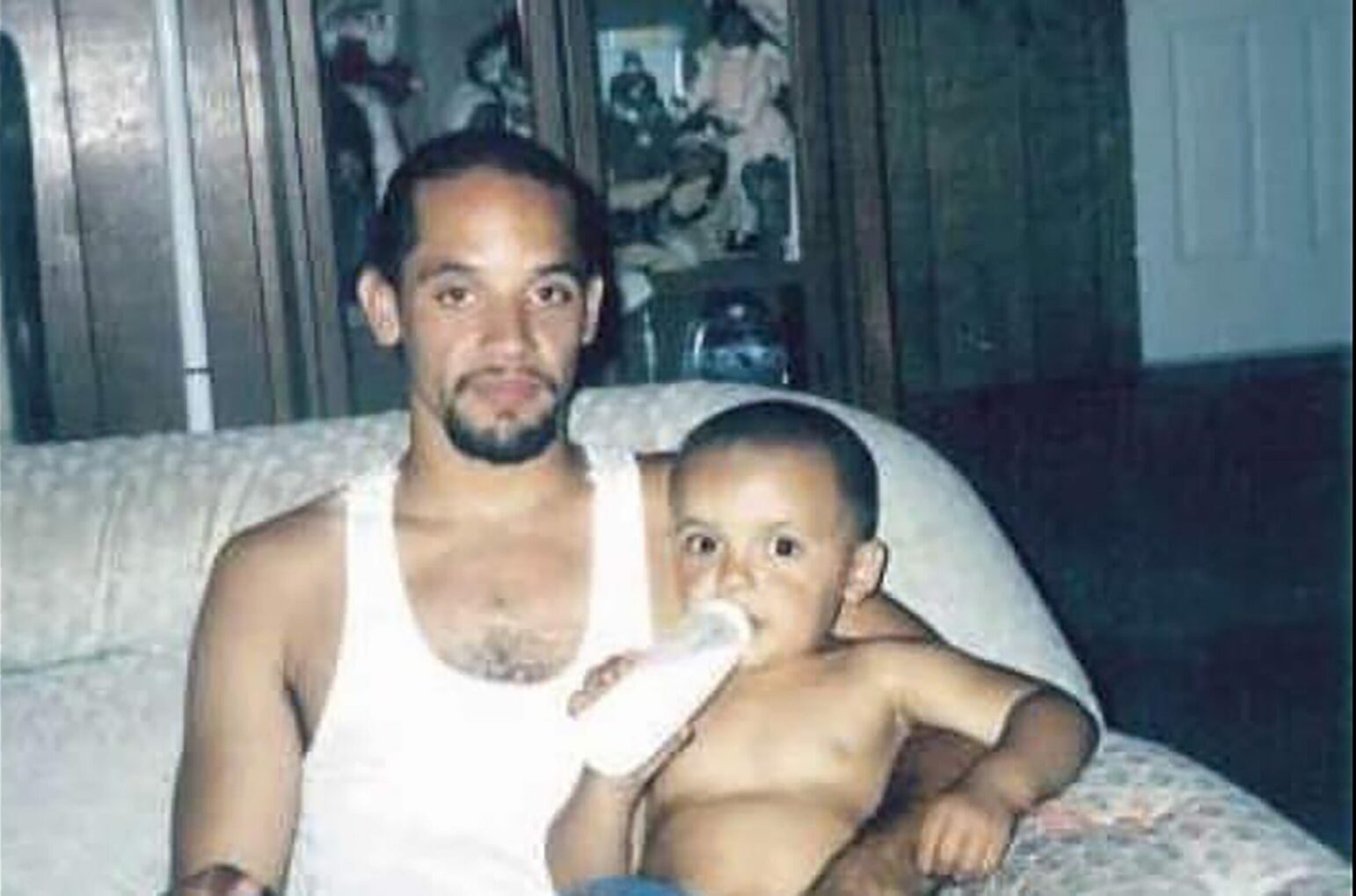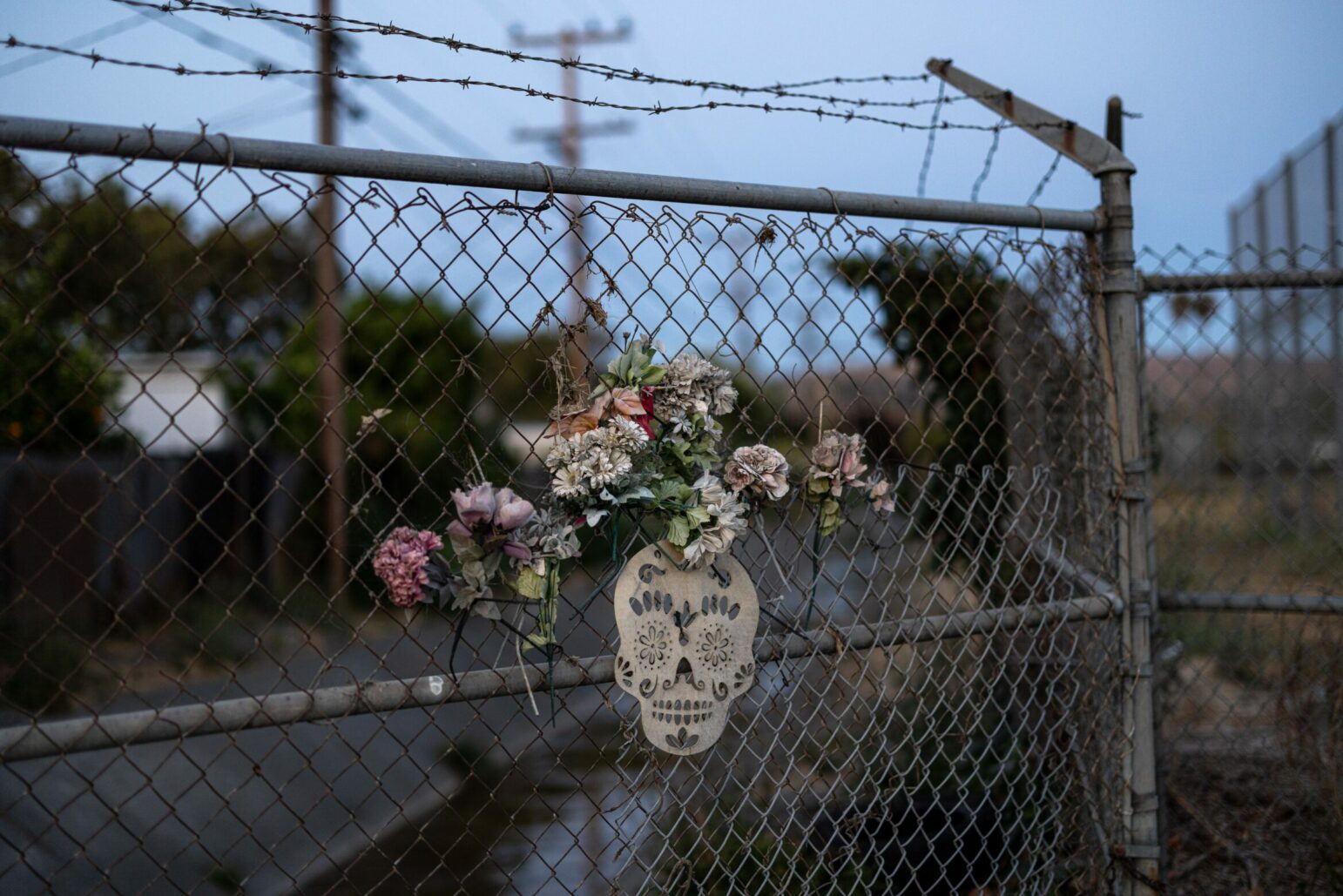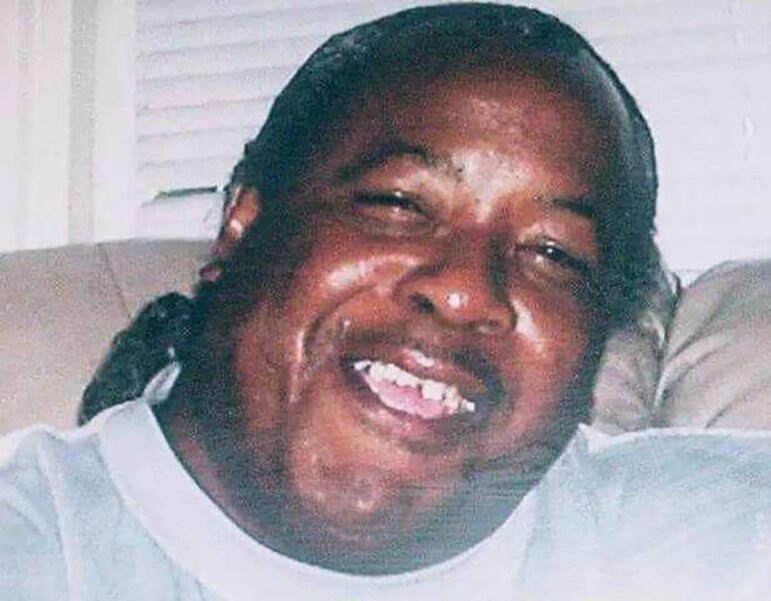
Behind Hogan High School on Rosewood Avenue in Vallejo, Calif., artificial flowers in pastel pink and white still mark the place where Vallejo police Tased Andrew Lamar Washington 17 times on the night of Sept. 15, 2004.
Washington had run from police after allegedly striking a parked car while driving his roommate’s 1994 Ford Bronco.
After a more than 15-minute foot chase, Washington reached an 8-foot-tall fence and began to climb. As he reached the top, Ofc. Jeremie Patzer caught up with him and Tased him, causing him to fall face down into a drainage ditch containing no more than a few inches of water.
Patzer shocked Washington repeatedly as he tried to crawl away, previously-undisclosed records obtained through a public records lawsuit filed by Open Vallejo reveal.
Washington sustained 2 minutes and 54 seconds of near-continuous electric shock, according to device logs investigators downloaded from the Taser.
Moments later, another officer noticed that Washington was struggling to breathe. When medics arrived, he was lifeless. Yet no homicide occurred here, law enforcement officials concluded. Instead, authorities ruled Washington’s death an accident — a cardiac arrest, at 21 years old.
Washington’s case is one of four deaths in custody the city of Vallejo has fought for years to keep secret but was forced to disclose after a Solano County judge ordered their release in response to a lawsuit filed against the city by Open Vallejo.
The disclosures, along with death records obtained by this newsroom, paint a disturbing picture of officers’ use of force in the four deaths which local officials deemed “accidental.”
A review of the records shows that all four men were Tased by officers, and that in at least two cases, police attempted controversial restraint positions that have since been banned in California.
In two of the cases, officials ruled that the victims died of excited delirium, a cause of death officials often use to justify deaths in custody, but which is not recognized by the American Medical Association or the American Psychiatric Association. The Solano County Coroner’s Office also cited “excitement during police chase” as a factor in Washington’s death.
All of the victims were Black. All of them were unarmed. Their names are Andrew Lamar Washington, Otis Edward McPeters, Charles Khristopher Gordon, and Michael Todd White.
Open Vallejo reached out individually to each of the officers named in this story, who either declined to comment or did not respond. A spokesperson for the city did not respond to a request for comment. Deputy Police Chief Joseph Gomez said the Vallejo Police Department declined to comment.

Since 2019, Open Vallejo has attempted to obtain the records disclosed earlier this month under Senate Bill 1421, a California law that makes public records of police shootings, use of force resulting in great bodily injury, and sustained findings of certain types of misconduct. On Sept. 13, 2021, following years of unwarranted delays and withholding of records by city officials, Open Vallejo filed a public records lawsuit against Vallejo.
The city of Vallejo refused to produce the records in the four cases, arguing through Assistant City Attorney Katelyn Knight that officers were not responsible for the men’s deaths. (In 2021, Knight authorized the illegal destruction of evidence in multiple police shootings, including many records that were due to be disclosed under public records laws.)

The city argued that “the causes of death for all four [cases] were determined to be unrelated to the use of a taser, and that the taser may have at most caused some abrasions and contusions, not necessarily requiring any medical treatment” had those suspects survived, according to court documents.
In May, Solano County Judge Stephen Gizzi ruled in favor of Open Vallejo and ordered the city to release any records where “the individual who was shocked by the taser dies within 96 hours of being tased, while in custody.”
The city released the documents three months later, after lawyers for Open Vallejo flagged records that had not been disclosed, including the four cases.
The documents show how local officials treated the deaths as accidents and allowed officers to evade accountability even when faced with potentially dangerous uses of force by officers.
On the day Washington died, Patzer’s Taser battery became so hot that it melted the weapon’s plastic handle, a person with knowledge of the matter told Open Vallejo. They spoke on condition of anonymity because they were not authorized to discuss the case. (A sensor in the Taser indicated the device reached 93 degrees Fahrenheit, which would not have been enough to melt most plastics.)
Following Washington’s death, Patzer incorrectly told investigators that he discharged the device “approximately four times,” which was then repeated to the coroner’s deputies who investigated the case and ruled on the cause of Washington’s death.

Patzer’s Taser was fired 56 times in the two months prior to the night of Washington’s death, the records disclosed in response to Open Vallejo’s lawsuit show. On one of those occasions, the device was discharged continuously for 95 seconds. The city has not disclosed documents relating to that incident.
Records suggest pathologists and the coroner’s office were never told that Patzer had shocked Washington 17 times instead of four.
“Cardiac arrest associated with excitement during police chase and cocaine and alcohol intoxication, occurring shortly after Tasering, (minutes),” Washington’s cause of death statement read. Patzer refused to submit to a drug test.
In June 2005, the Solano County District Attorney’s office declined to file charges against Patzer, finding that the officer’s actions “were both objectively reasonable and necessary to protect himself as well as other officers and civilians in the area.” Washington’s death, the District Attorney wrote, “was the result of his own misconduct.”
A spokesperson for the Solano District Attorney’s Office declined to comment, adding that the agency possessed no records in the case other than the letter clearing Patzer of criminal liability.
The records released in the case contain no evidence that an internal investigation was conducted into the incident. In 2013, the city settled a civil rights lawsuit filed by Washington’s family for $140,000.
‘They beat him to death’

A year after Washington’s death, the Police Executive Research Forum published policy and training guidelines warning against Tasing a person multiple times, which the organization found appears to “increase the risk of death or serious injury.” But on June 15, 2010, that did not prevent Vallejo officers Raul Munoz and John Cunningham from Tasing 47-year-old Michael Todd White at least six times, records show. White had locked himself in his bathroom after allegedly assaulting a neighbor.
Police records suggest that investigators downloaded the Tasers’ internal logs, but the city did not disclose them as part of White’s case file.
Munoz allegedly punched White three times and Ofc. Barry Boersma placed him in a carotid hold, according to court records. The restraint position restricts blood flow to the brain by applying pressure to a person’s neck and was made illegal in California in 2020. White went limp moments later, according to public records.

Police handcuffed White and sat him up until he regained consciousness, but when he allegedly became combative, Officers Mike Koutnik, Herman Robinson, Munoz and Cunningham began to struggle with White in an attempt to subdue him, according to court records. Officers rolled White on his stomach, and Cunningham bound his legs, which were then tied to his handcuffed hands. The practice, called “hogtying,” is prohibited by many police departments and disapproved of by the U.S. Department of Justice since 1995.
Officers carried White to a gurney to which they bound his hands and feet. He soon lost consciousness again and died shortly after, records show. An analysis found a potentially toxic amount of cocaine in White’s system, and the coroner ruled that his death had been caused by excited delirium.
“This diagnosis is controversial,” forensic pathologist Susan Hogan wrote in White’s autopsy. “However, the scenario in which it occurs and the symptoms exhibited by those who succumb to Excited Delirium Syndrome are very consistent. This gives this diagnosis validity,” she concluded before ruling the death an accident.
White’s family filed a civil suit against the officers, which settled for $135,000, according to public records.
“Mike was funny, he was fun, you know, he was loud,” White’s brother Jay King, a Grammy Award-nominated musician, told Open Vallejo. “He was a good guy.”

Charles Khristopher Gordon too was Tased, and his legs tied up, shortly before dying in custody on the night of Sept. 3, 2007. Public records suggest that Gordon was “hobbled,” which unlike hogtying does not necessarily involve tying a person’s feet to their hands or handcuffs.
Gordon, who lived with a schizophrenia diagnosis, had allegedly stabbed himself in the neck and was in need of medical treatment. But when his mother, Doris Gordon, drove to Sutter Solano Hospital, nobody came out to help, she told Open Vallejo.
Frustrated, she was heading to a different hospital when police intercepted her car and pulled open the passenger door.
Gordon, terrified, did not want to get out, his mother said.
“You’re going to hurt me,” he said, according to police reports.
Ofc. Waylon Boyce forcibly pulled Gordon out of the car, records show. When Ofcs. Mark Thompson and Boyce subsequently confronted Gordon, he allegedly became combative, swinging his fists and yelling, according to his death investigation report.

“They lied,” Doris Gordon told Open Vallejo. “They lied that he was flailing his arms and trying to hit them.”
Then, Thompson Tased Gordon once in the lower back for five seconds. Doris Gordon said her son was Tased while trying to crawl away.
Officers handcuffed him and tied his feet together, police records show. Gordon carried the knife he used to cut himself in his pants, but he did not wield it during the incident, records show.
Gordon’s twin sister Tracie said her brother was restrained, face up, when she arrived at the scene.
“I could see tears running down his face but his eyes were closed,” she told Open Vallejo.
Officials eventually tied Gordon’s hands and feet to a hospital gurney so medical staff could treat him, but he began to have trouble breathing, records show. The stab wound on his neck turned out to be superficial, doctors found, but he died despite medical care. Like White, his cause of death was found to be excited delirium.

As for 52-year-old Otis McPeters, he was pulled over on January 9, 2005 for Vehicle Code violations when officers began to suspect that he had attempted to swallow a bag containing an illegal substance, police records show.
Vallejo Ofc. Brent Pucci struck McPeters with his metal flashlight two to three times and Patzer placed him in a carotid hold, records show. Pucci, Patzer, and Ofc. Robert Mackay fell to the ground with McPeters, who hit his head as he landed face down. Vallejo officer Robert Knight then Tased McPeters twice, for a total of 11 seconds.
Officers handcuffed McPeters, but by the time they rolled him onto his side, he was unresponsive and bleeding from the head.
A pathologist for the county found multiple abrasions and contusions on McPeters, including on the neck, forehead, side of the face, and lips, according to death records obtained by Open Vallejo. He also had broken blood vessels in his eyes, a potential sign of positional asphyxiation, according to academic research.
“They beat him to death!” one of McPeters’ sisters exclaimed when a deputy showed her pictures of his body, according to death records obtained by Open Vallejo.
But again, officials ruled that the death had been an accident — acute cocaine intoxication, though the concentration of the drug in McPeters’ blood was found to be below the “potentially toxic” threshold, according to the toxicology report in the case.
In 2012, the city settled a lawsuit with McPeters’ family for $2,500.
None of the case files released by the city this month contained evidence that the officers involved in the fatalities were disciplined, or that internal investigations were opened.
“You can’t win when the government is the criminal,” said Jay King, Michael Todd White’s brother. “They don’t even have to sweep it under the rug.”



